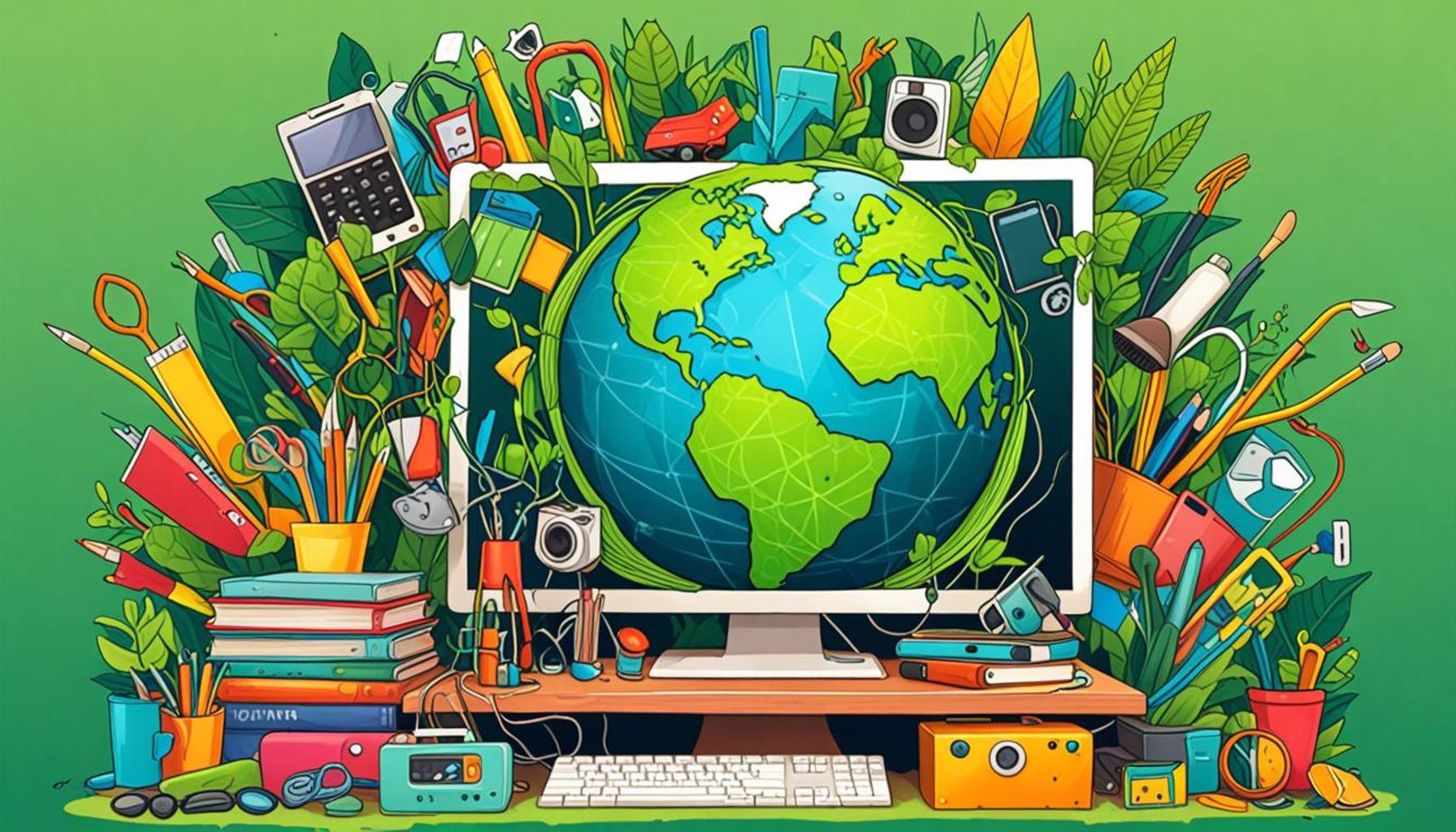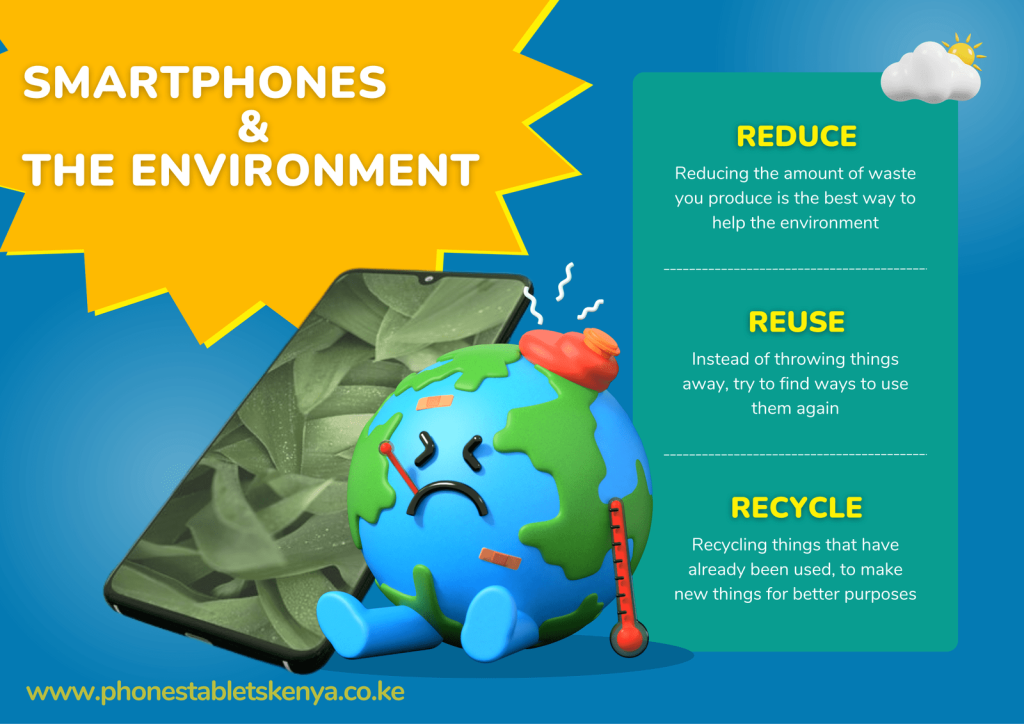Digital Decluttering and Sustainability: How Reducing Digital Consumption Contributes to a Greener World

Understanding the Impact of Digital Footprint
As our reliance on technology continues to grow, each individual’s digital footprint can be more profound than we realize. This footprint comprises our online activities, such as the websites we visit, the emails we send, and the files we store in the cloud. Each of these actions, while seemingly inconsequential, contributes to a larger narrative of global carbon emissions. To truly appreciate this impact, consider the myriad data centers that are essential for our online experience. These facilities, responsible for storing and processing our data, consume a staggering 2% of global energy consumption, which is on par with the energy used by some smaller countries.
Statistics that Speak Volumes
Every year, our email habits alone generate over 30 billion pounds of CO2. This figure underscores the hidden costs behind our seemingly innocuous digital communication. From promotional emails to transactional notifications, each message requires power to be sent, stored, and eventually deleted. Furthermore, every unnecessary file stored online adds to this growing energy demand, creating a cycle of consumption that can feel endless.
The Benefits of Digital Decluttering
But what can we do about this apparent paradox of digital convenience versus environmental cost? One highly effective way is to embrace digital decluttering. This process can lead to a multitude of benefits:
- Lowered energy consumption: By eliminating unnecessary files and emails, we directly reduce the power required to maintain servers and data storage facilities, creating a more efficient digital ecosystem.
- Improved device performance: A decluttered device is not only faster but often requires less energy to function. This efficiency can extend the life of our gadgets, resulting in less electronic waste.
- Mindful consumption: The act of decluttering encourages us to reflect on what we truly need in our digital lives. By fostering this awareness, we can make smarter choices about the data we create and retain.
Taking Action Towards Sustainability
Engaging in digital decluttering is more than just a personal tidying up; it is a conscious step towards a sustainable future. In the United States, this could mean reassessing our reliance on cloud storage services, prioritizing the deletion of old emails, and being more strategic about the files we keep. Small changes at the individual level can aggregate into significant environmental benefits on a larger scale, paving the way for future generations to enjoy the advantages of technology without bearing the burden of its impacts. Every action matters; as individuals take steps to reduce their digital clutter, they contribute to a collective movement toward environmental responsibility.
DISCOVER MORE: Click here to learn about tools that keep you clutter-free



Digital Consumption: The Hidden Environmental Costs
As we navigate our digital lives, it’s easy to overlook the ecological toll of our online habits. The transition to a more digital existence was meant to streamline our lives, but in the process, a significant challenge has emerged: the cumulative environmental impact of digital consumption. In the United States alone, estimated data shows that the average internet user engages in more than 20 online activities each day—everything from streaming videos to engaging on social media—each of which steadily contributes to energy consumption. With an average of 1.5 billion emails sent every day in the US, the consequences of this digital overload are staggering.
Energy Consumption of Digital Activities
To truly quantify the impact, consider how much energy is consumed by the very platforms we rely on. The energy cost of a simple email, especially one with attachments, is far greater than many suspect. Studies indicate that a typical email generates approximately 4 grams of CO2, but when these messages accumulate into the billions, it equates to substantial emissions. Similarly, video streaming—a beloved pastime—uses nearly 80-90% of all internet bandwidth, translating into high energy needs for data centers around the globe. These centers not only consume energy but also require cooling systems to maintain operational capacity, further exacerbating energy use.
Realizing Digital Excess
To grasp the greater implications of our digital habits, we must confront some startling statistics about the current state of digital consumption:
- Over 300 million tons of CO2 are produced each year solely from the streaming of video content.
- It is projected that data centers will consume over 10% of the world’s electricity by 2030 if the current growth rate continues.
- Uncleared online storage accounts, including personal archives and unused applications, produce approximately 1.5 billion tons of emissions annually.
These figures may be shocking, but they highlight a critical opportunity for change. By recognizing the impact of digital clutter on our environment, we can take concrete steps towards mitigating this burden. Understanding that each file, email, or streaming activity can contribute to a significant carbon footprint nudges us toward adopting a more mindful digital lifestyle.
Shifting Mindsets Towards a Sustainable Digital Future
In order to embrace sustainability in the digital realm, we need to shift our mindsets. Cleansing our digital space is not just about organization; it is about fundamentally altering our relationship with technology. By committing to digital decluttering, we can redefine our approach to data consumption. Whether it’s unsubscribing from unwanted newsletters, periodically deleting old files, or assessing the necessity of our cloud storage needs, each small step has the potential to contribute to a much larger sustainable movement. The challenge thus lies in embracing this change, and the rewards could mean a healthier planet.
| Advantage | Description |
|---|---|
| Lowered Energy Consumption | Prioritizing digital decluttering can significantly reduce the energy demands of devices and data centers, leading to less overall consumption of fossil fuels. |
| Reduced E-Waste | By minimizing your digital footprint, you directly lessen the impact of e-waste, which is a major environmental issue. Less hardware means less disposal, potentially creating a circular economy. |
Continuing on the theme of “Digital Decluttering and Sustainability,” it’s essential to understand how adopting responsible digital habits contributes substantially to a greener world. As we navigate our increasingly digital lives, the unseen costs of excessive data consumption become apparent. Every search query or streaming session requires vast energy resources, contributing to a growing carbon footprint. By actively engaging in digital decluttering, individuals can streamline their digital lives and the associated energy use.Furthermore, the lifecycle of electronic devices is intricate, often leading to alarming statistics surrounding e-waste. Each year, millions of tons of electronic waste are discarded, representing a staggering environmental hazard. Reducing your digital consumption not only promotes sustainability but also encourages technologies that foster recycling and reuse. As digital consumption continues to rise globally, understanding these dynamics becomes crucial for fostering a sustainable future.
DISCOVER MORE: Click here to learn about finding balance
The Role of Digital Tools in Environmental Awareness
In the pursuit of a greener world, digital tools can be both an ally and a challenge. While the increasing use of digital platforms can lead to severe environmental impacts, these same platforms also harbor the potential to facilitate sustainability initiatives. Numerous applications and online resources are emerging that aim to minimize carbon footprints not only in everyday life but also in our digital usage. For instance, tools like Earth Hero and Oroeco empower users to track their carbon emissions and make lifestyle changes that promote sustainability. These applications integrate seamlessly into our digital lives, helping individuals visualize the positive impact that decluttering their digital habits can hold for the planet.
A Path to Digital Minimalism
Digital minimalism is a philosophy gaining traction as a solution to combat the overflowing consumption of digital resources. Advocated by thinkers like Cal Newport, digital minimalism isn’t merely about reducing one’s digital footprint; it’s about prioritizing meaningful engagement with technology. Newport suggests individuals critically assess their digital consumption habits and eliminate non-essential activities that do not add value to their lives. This approach inherently leads to a natural reduction in energy consumption—fewer apps and services mean less background data processing, lower server loads, and, subsequently, reduced CO2 emissions.
Implementing Sustainable Practices
Transitioning to a more sustainable digital life is not limited to individuals; businesses also hold significant responsibility. Organizations can adopt various measures to mitigate their environmental impact. For example, shifting to cloud storage providers that prioritize renewable energy sources can substantially lessen the energy consumed per gigabyte. Enterprise solutions such as Google Cloud and Microsoft Azure are commitments to sustainability, with emissions significantly below the industry average. Furthermore, businesses can encourage their employees to practice digital decluttering, leading to a more efficient system that not only minimizes energy consumption but also enhances overall productivity.
The Ripple Effect of Conscious Digital Consumption
Conscious digital consumption fosters a ripple effect, influencing friends, family, and communities to rethink their habits. As we take steps toward reducing our digital clutter, we become ambassadors of the cause, inspiring others to embrace digital decluttering and its associated sustainability efforts. Social media platforms can play an instrumental role in generating awareness. Hashtags like #DigitalMinimalism or #SustainableTech have the power to rally communities, and share strategies and success stories, further amplifying the movement and nurturing a culture of sustainability in technology.
The Future of Sustainable Digital Practices
Looking ahead, the marriage between technology and sustainability is poised to strengthen as the next generation of digital natives prioritize eco-consciousness. Educational institutions are beginning to incorporate lessons on digital responsibility and sustainable practices into their curricula, ensuring that future generations embrace not only a reduced digital footprint but also a holistic understanding of their role in combating climate change. As we continue to adapt, we must question—not just the necessity of our digital assets—but also how every byte contributes to the future we want to cultivate. In this light, embracing a sustainable digital lifestyle becomes not just a necessity, but a vital step towards a greener planet.
DISCOVER MORE: Click here to learn how simplicity can enhance sustainability
Conclusion: The Path Forward
As we navigate the complexities of the digital age, the intertwined nature of our digital consumption and environmental impact has never been clearer. Digital decluttering stands as a powerful solution—one that not only enhances our mental clarity and productivity but also significantly reduces our carbon footprints. From mobile applications that advocate responsible usage to businesses embracing sustainable cloud solutions, the realm of technology offers numerous avenues for minimizing the ecological effects of our online habits.
Moreover, the movement towards digital minimalism empowers individuals and organizations alike to question their digital necessities and eliminate wasteful practices. It encourages a shift from mindless consumption to mindful engagement, pushing us to critically evaluate each interaction with technology. This cultural transformation is essential; as we adopt sustainable digital practices, we inspire others within our communities to reexamine their own digital habits.
In essence, reducing digital consumption is not solely an individual endeavor but rather a collective call to action that reverberates through families, friends, and social networks. The ongoing dialogue surrounding sustainability in technology, buoyed by advocacy and education, paves the way for future generations to inherit a world where their digital choices contribute to a healthier planet. By prioritizing sustainability in our digital lives, we lay the foundation for a greener future—one byte at a time. As we step into this new epoch, let us remain vigilant and proactive in our choices, ensuring that our online legacy reflects a commitment to environmental stewardship on a global scale.


